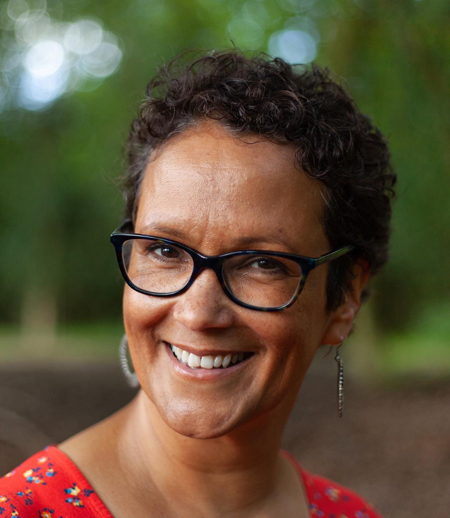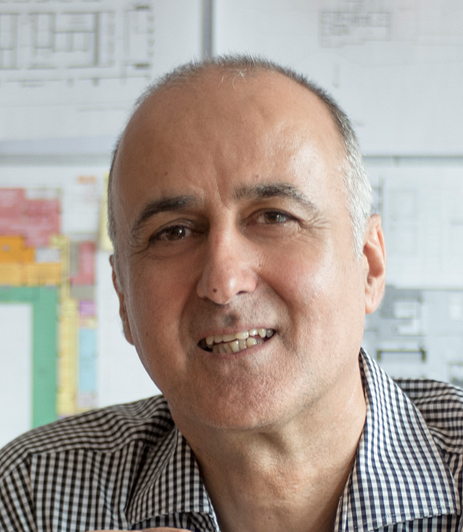



SELECTED
ISSUE
|
|
Leisure Management - Pay-what-you-can packages

Everyone’s talking about

|
|
| Pay-what-you-can packages
|

Could asking customers to pay only what they can afford for
spa retreats and services be a way to widen access, while still
looking after the bottom line? Kath Hudson investigates
|


Charlotte Church’s retreat offers places based on what people can afford photo: Elliot Cooper
|
|
|
Pay what you can and pay it forward are already established models in other sectors. The waste food café movement invites people to pay what they can spare and opens up the eating-out experience to those on less or no income. Some in the arts sector, for example, Battersea Arts Centre in London, offer pay-what-you-can tickets for performances and encourage those with more money to pay above the standard ticket price. This is a move which has had a great impact on allowing different demographics to access its shows, it reports.
The wellness sector is a great fit for egalitarian principles and spas are starting to take note. The Dreaming, a Welsh retreat opened by celebrity singer Charlotte Church, is offering one place on each package on a pay-what-you-can basis to make it more inclusive.
Could pay-what-you-can work as a way of broadening access to the wellness industry? And would it be able to do this while still turning a profit? What else might be a feasible way for the industry to be more inclusive – especially given the cost of living crisis – to those who can’t currently afford to pay full price? We take a closer look…
|
Ali Gunning founder Resonant Being

photo: Ali Gunning
I’d like all types of wellness to be open to everyone, regardless of their financial and life circumstances. I run a variety of sound healing events with different pricing, which means there’s usually an opportunity which is accessible to everyone.
Concessions are planned into my offerings, so I don’t regard them as a financial hit. On top of this, two spaces are available for people who cannot afford any financial contribution and I also offer the option of exchanging a place for helping me pack up. I’ve noticed other practitioners invite participants to pay extra, if they can, to support people who can’t pay full price.
I don’t ask for any proof of what people can afford, they just choose the option which is right and applicable for them. Some people might have had a hard month and attend for free, but pay full price the following month. For me, trust and adaptability are central to a wellbeing business.
All businesses have different overheads and responsibilities, but I feel generosity is a spontaneous quality and it shows you have confidence in your offering. Being of service is part of a spiritual path which doesn’t have to be separate from running a business. That doesn’t have to mean doing everything for free, but it may mean thinking about working in ways which benefit a wider range of people.
Going forward, I think we will see more creativity in pricing options as interest in self-care grows.
Generosity is a spontaneous
quality which shows you have
confidence in your offering
Lauren Moloney CEO and founder, The Spa Collaborative

photo: The Spa Collaborative
It feels possible spas could experiment with a pay-what-you-can-afford approach, although if it’s adopted it would likely be challenging to operationalise. Any spa interested in initiating this type of offer should first establish its key objective. If any part of the objective is to generate PR citing charity or altruism it could be seen as cause-related marketing and ultimately devalue and derail any real benefit.
A more feasible, transparent and realistic option to broaden access to wellness would be to implement strategic dynamic pricing or clear charitable initiatives. This could include mid-week rates or morning rates, which offer a base entry-level option for guests during times when the spa has availability. Another option could be organising mobile spa excursions to care homes, hospitals, or youth centres.
To truly expand the benefit of spa experiences to those who may not be able to afford the listed price, it’s important to clearly define the target group and then research and understand this demographic and how your business can best address their needs. It’s not a spa’s role to determine what individuals can or cannot afford, nor should we judge their wealth or worthiness. Instead, a simple, targeted and transparent approach is the best way to deliver this type of endeavour.
Dynamic pricing is a more
feasible, transparent and realistic
option than pay-what-you-can
Donna Lancaster Founder, Deepening into Life

photo: Chris Brock
Ioffer pay-what-you-can slots at my personal development and healing workshops. The amount of these varies – if a workshop doesn’t sell out, I offer the remaining spaces as free or pay-what-you-can. I also hold regular pay-what-you-can events, like Circle of Grace, which are specifically for people who can’t afford to access my other workshops but want to do inner work. On average I’d say there are five to 10 people who come on free or discounted places at my one-day workshops.
Coming from a very poor background myself, I know only too well how hard it can be to access health and wellbeing resources. In my view, retreats are not a luxury but a necessity for physical, emotional, intellectual and spiritual wellbeing. Frankly, those who struggle the most financially – like many single mums – deserve a retreat and I don’t like the idea of them being limited to wealthy, privileged people.
I find that most people who can pay a little more do and this helps mop up some of the financial losses. But I’m also okay with working for free at events sometimes so people can still access my services. If someone can’t afford to pay anything at all, they can help in other ways, like setting out chairs, making tea or even bringing cakes. It’s important they feel like they’re contributing in some way as lack of money comes with a lot of shame for many.
I don’t ask for proof that people can’t pay much, I trust them and I’ve never really experienced people taking advantage. I simply make it clear in my promotions/website that places will be made available for free or pay-what-you-can, for those who need it. I also make it clear that these slots are not for people who have the money but are simply not willing to invest in themselves.
It feels good and right, kind and loving to offer pay-what-you-can and the world needs more of this! There are more important things than making a profit. Often the benefits are just as much for those who offer the pay-what-you-can places, as for those who receive them. It’s a win-win for the heart and soul.
Coming from a very poor background,
I know how hard it can be to
access wellbeing resources
Roger Allen CEO, RLA Global

photo: RLA Global
Successful brands want to be seen as making a positive contribution to society and as a gesture and intention, the pay-what-you-can option is of tremendous value. However, how operators sustain it is specific to the brand, the offering and the market segmentation.
It also needs to be taken into consideration that flexible pricing of services requires buy-in from multiple stakeholders, including front-line staff who need to administer it. In addition, brands have to be conscious of how to offer it so that consumers who can afford the experience do not take advantage of the initiative.
In some industries, flexible pricing is easier to control and manage. Take Pret A Manger for example, the hugely successful sandwich franchise was able to apply lower product pricing in its shops in neighbourhoods which have a lower income bracket. This is a manageable and controllable solution for discounting and a way of targeting a particular segment with a charitable intention.
With a singular outlet, allowing people to pay what they can afford is open to abuse. But it could work for those who can apply discretion in their pricing, such as people who are self-employed, one-person or small businesses.
In some industries, flexible pricing
is easier to control and manage
Ingo Schweder CEO, GOCO Hospitality

photo: GOCO Hospitality
Even when the wellness industry was booming pre-pandemic concerns were being raised about it focusing on wealthy customers, while global inequality increased and the world’s poorest – who are most likely to suffer from sickness, depression and premature death – were unable to access the benefits. And since COVID-19, many have even less disposable income.
Going forward, the importance of balancing health with financial subsistence will become an increasingly mainstream topic of discussion. The wellness industry must acknowledge this narrative and address a growing number of guests with more moderate budgets. This may lead to diversification and a natural shift towards greater democratisation, manifesting in more provision of mid-range wellness offerings and increasing accessibility.
During the pandemic, we opened Glen Ivy Hot Springs up to people on a pay-what-you-can-afford basis, as we wanted to do good and be emotionally close to regulars during a time of global stress. Some people were outright cheap and took full advantage, only paying 10 per cent of the real costs, while others were more mindful. However, we’ve experienced a substantial interest in the growth of a more democratised wellness model and have created, and are developing, more offers aimed at the wide middle class. I firmly believe the greater population needs to partake in more, often rather simple, wellness regimes and be exposed to the many offerings available to get healthier, feel better and function more consciously.
Some people took full advantage, only
paying 10 per cent of the real costs

Glen Ivy Hot Springs offered a pay-what-you-can package in the pandemic / photo: Glen Ivy
|
|
 |
| Originally published in Spa Business 2023 issue 4
|
|
 |
|
